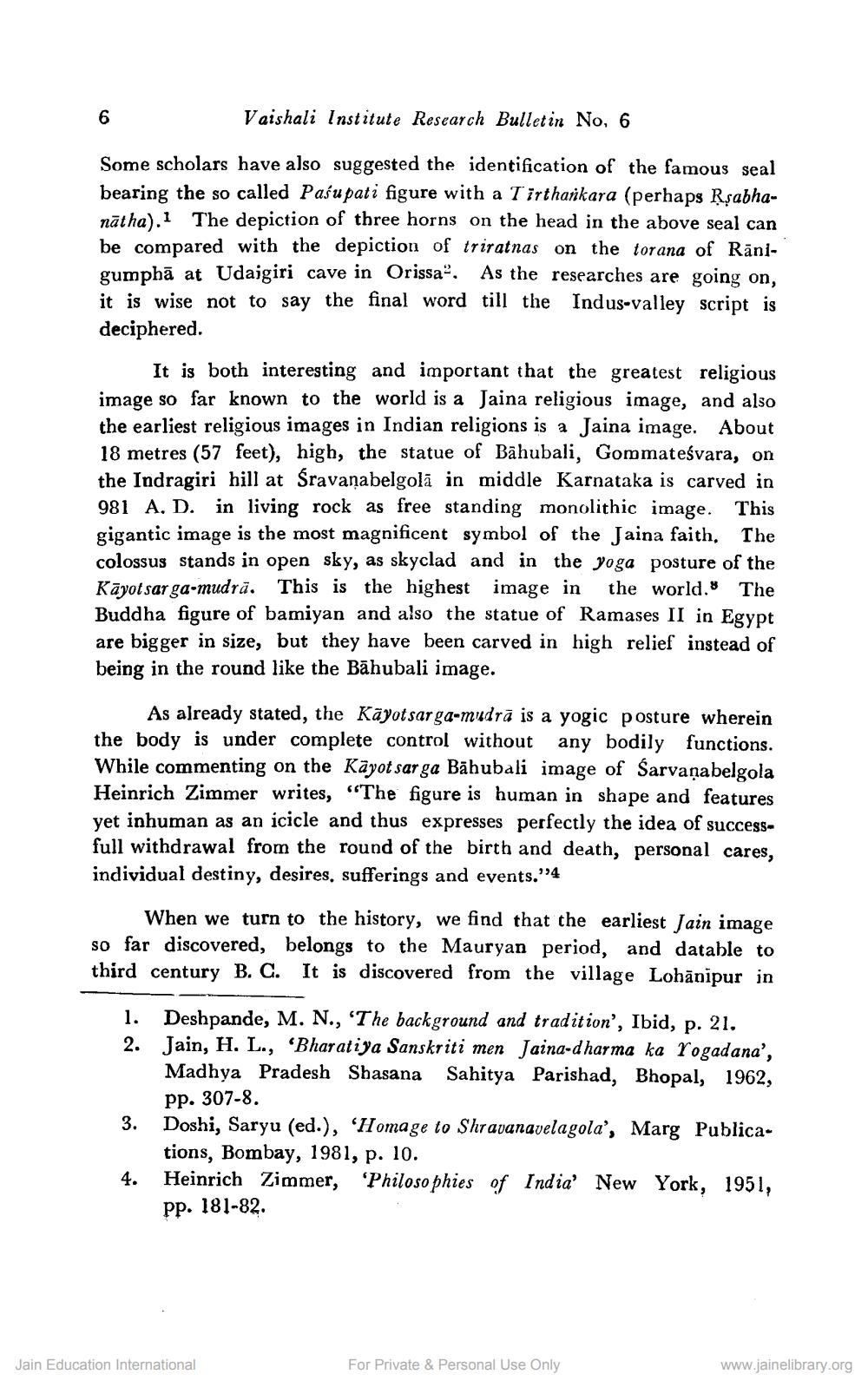________________
Vaishali Institute Research Bulletin No, 6
Some scholars have also suggested the identification of the famous seal bearing the so called Pašu pati figure with a Tirthankara (perhaps Rsabhanātha).1 The depiction of three horns on the head in the above seal can be compared with the depiction of triratnas on the torana of Rānigumphā at Udaigiri cave in Orissa. As the researches are going on, it is wise not to say the final word till the Indus-valley script is deciphered.
It is both interesting and important that the greatest religious image so far known to the world is a Jaina religious image, and also the earliest religious images in Indian religions is a Jaina image. About 18 metres (57 feet), high, the statue of Bahubali, Gommateśvara, on the Indragiri hill at Sravanabelgola in middle Karnataka is carved in 981 A. D. in living rock as free standing monolithic image. This gigantic image is the most magnificent symbol of the Jaina faith. The colossus stands in open sky, as skyclad and in the yoga posture of the Kāyot sar ga-mudrā. This is the highest image in the world. The Buddha figure of bamiyan and also the statue of Ramases II in Egypt are bigger in size, but they have been carved in high relief instead of being in the round like the Bāhubali image.
As already stated, the Kayotsarga-mudrā is a yogic posture wherein the body is under complete control without any bodily functions. While commenting on the Kāyot sar ga Bāhubali image of Sarvaņabelgola Heinrich Zimmer writes, “The figure is human in shape and features yet inhuman as an icicle and thus expresses perfectly the idea of successfull withdrawal from the round of the birth and death, personal cares, individual destiny, desires, sufferings and events."4
When we turn to the history, we find that the earliest Jain image so far discovered, belongs to the Mauryan period, and datable to third century B. C. It is discovered from the village Lohänipur in
1. Deshpande, M. N., The background and tradition', Ibid, p. 21. 2. Jain, H. L., 'Bharatiya Sanskriti men Jaina-dharma ka Yogadana',
Madhya Pradesh Shasana Sahitya Parishad, Bhopal, 1962,
pp. 307-8. 3. Doshi, Saryu (ed.), 'Homage to Shravanavelagola', Marg Publica
tions, Bombay, 1981, p. 10. 4. Heinrich Zimmer, 'Philosophies of India' New York, 1951,
pp. 181-82.
Jain Education International
For Private & Personal Use Only
www.jainelibrary.org




